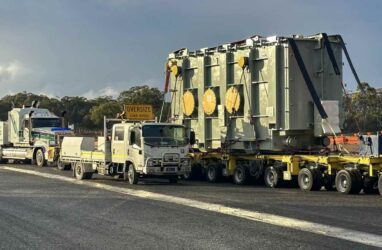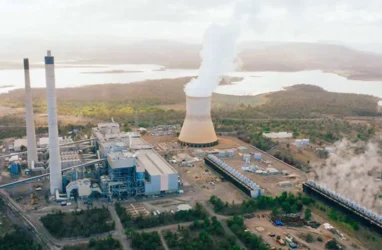Feed aggregator
China sets compliance deadlines, tasks for national ETS
Brussels seeks views on EU ETS reform ahead of 2026 policy update
Microsoft signs another huge offtake deal for CDR credits
Amphibious boat brings Bond-style glamour to RSPB in Northumberland
Bear Grylls-inspired vessel helps wardens on Coquet Island care for UK’s only breeding colony of roseate terns
It looks like something James Bond might drive – or, more accurately, Bear Grylls. But rather than enabling secret missions or carrying millionaires, this innovative amphibious boat is helping RSPB wardens look after Britain’s only breeding colony of roseate terns.
The endangered birds nest on Coquet Island off the Northumberland coast each spring but seasonal wardens who manage the tiny island struggle to get on and off it because there is no safe mooring point or harbour at low tide. This means boats can only take people and kit to the island at high tide – often at inconvenient times of day or night – making life for the wardens, who live in the island’s lighthouse, a little complicated.
Continue reading...Net zero banking alliance votes to water down climate requirements
Atomic Secrets: a Chornobyl scientist warns of a toxic future
Dmitry Kalmykov is a Ukrainian scientist who has dedicated his life to investigating environmental disasters, first at Chornobyl and now in Semipalatinsk, Kazakhstan - formerly the Soviet Union's primary nuclear weapons testing site. He teaches schoolchildren about how bombs were tested, and how – more than 30 years after the site was decommissioned – the surrounding community is only beginning to comprehend radiation's lasting deadly effects. Against the backdrop of war in Ukraine and the long shadow of a nuclear conflict across the region, Dmitry debates Kazakhstan's nuclear future with its next generation
Continue reading...Australian startup promises 80% emissions cut for cement making from new additive
Solar has taken a big bite out of Queensland coal’s lunch, now wind is eating into its midnight snack
The post Solar has taken a big bite out of Queensland coal’s lunch, now wind is eating into its midnight snack appeared first on RenewEconomy.
Fifteen years after a volcano shut European airspace, could it happen again?
Teenage wind turbine technician falls to his death in Wyoming
The post Teenage wind turbine technician falls to his death in Wyoming appeared first on RenewEconomy.
Macquarie’s Eku acquires a 2 GWh battery storage project portfolio
The post Macquarie’s Eku acquires a 2 GWh battery storage project portfolio appeared first on RenewEconomy.
Origin chases down Snowy Hydro for control of dispatchable generation
The post Origin chases down Snowy Hydro for control of dispatchable generation appeared first on RenewEconomy.
Pakistan grants host country approval for int’l carbon trade to two projects
Faintings, blackouts and violence: Iraq’s scorching emergency – in pictures
The country’s average temperature has risen by 0.48C a decade from 2000. Last August, photographer Susan Schulman visited Baghdad and Amarah, to capture the impact of extreme weather on everyday lives
Continue reading...Emissions fall as New Zealand approaches halfway to methane target
UPDATE- Safeguard Mechanism compliance sees 7.1 mln ACCUs surrendered, 2.7 MtCO2e reduced
Heads roll at Callide and CS Energy as LNP coal plant extension explodes into high farce
The post Heads roll at Callide and CS Energy as LNP coal plant extension explodes into high farce appeared first on RenewEconomy.
Mitsubishi partners with shipbuilder to capture ships’ oil production emissions
Solar Insiders Podcast: A Teal take on what voters want – and how to give it to them
The post Solar Insiders Podcast: A Teal take on what voters want – and how to give it to them appeared first on RenewEconomy.
Australia’s only surviving newsprint paper mill to switch out coal-fired boilers, go electric
The post Australia’s only surviving newsprint paper mill to switch out coal-fired boilers, go electric appeared first on RenewEconomy.










